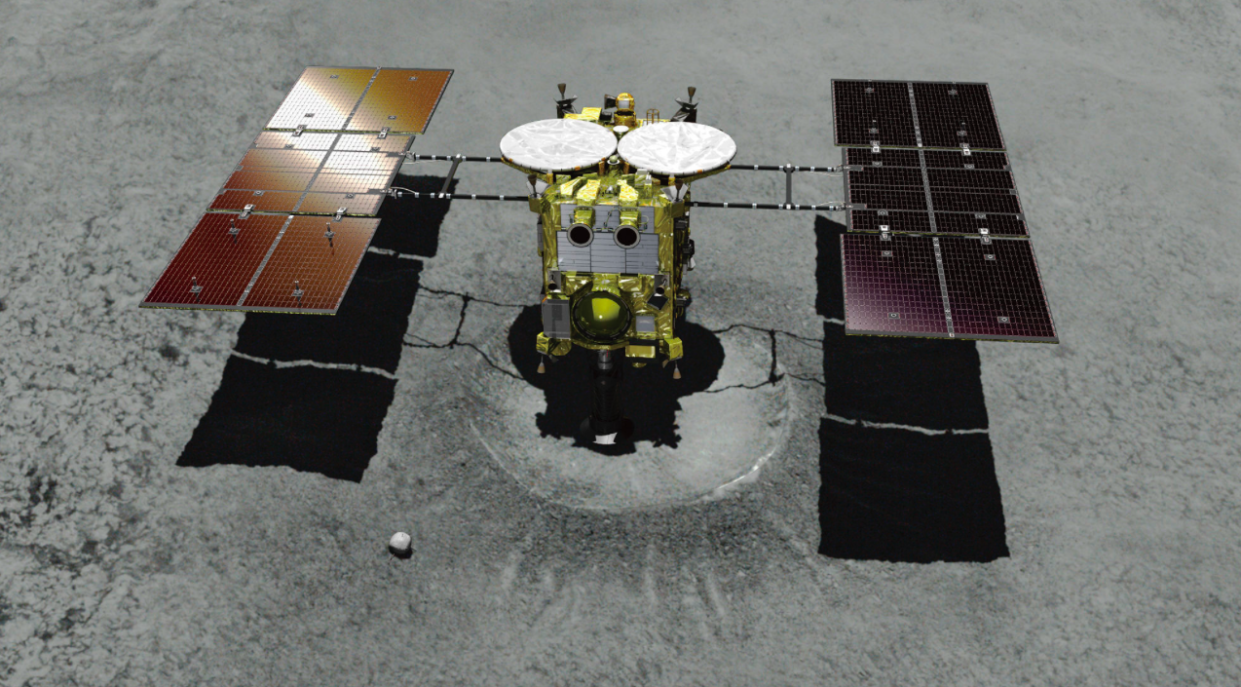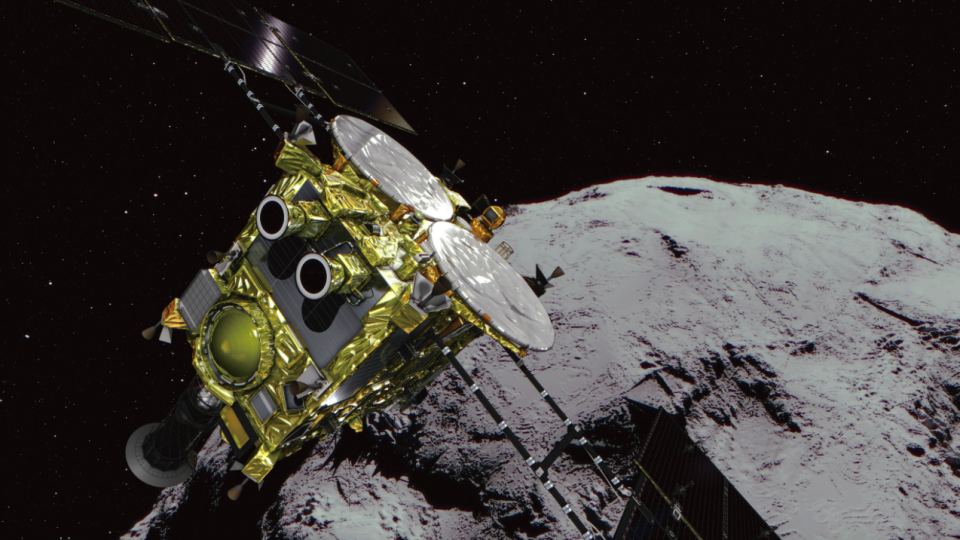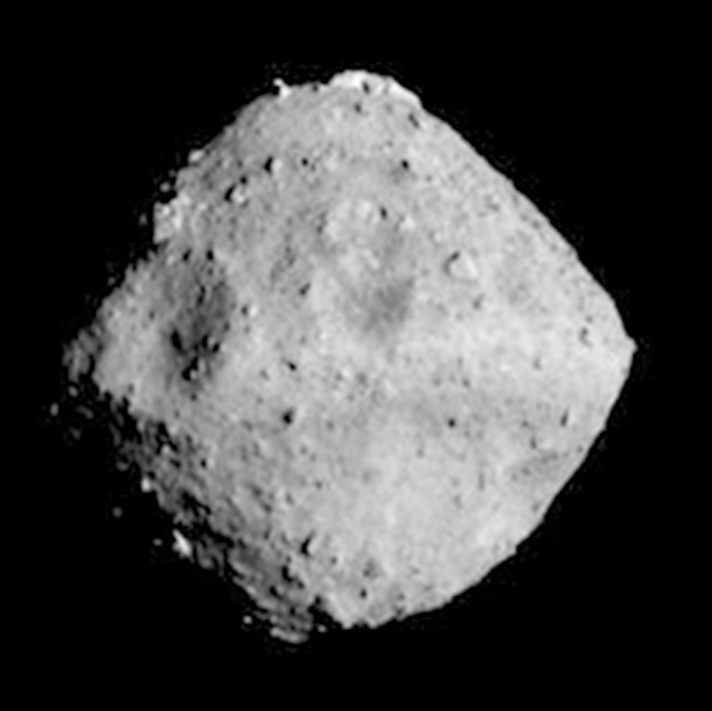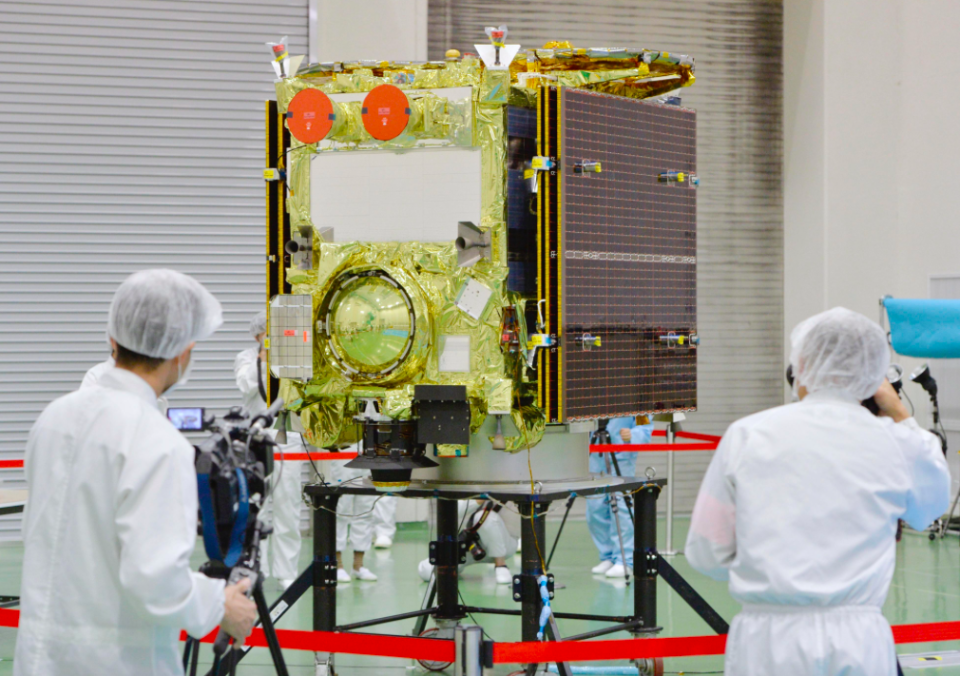Japanese space explorer arrives at asteroid 170 million miles from Earth after journey lasting nearly four years

After a mammoth journey lasting near four years, a Japanese space explorer has arrived at an asteroid to blow a crater so that it can collect samples to eventually bring back to Earth.
The unmanned Hayabusa2 spacecraft reached its base of operations about 12 miles from the asteroid and some 170 million miles from Earth, the Japan Aerospace Exploration Agency (JAXA) said.
Over the next year and a half, the spacecraft, that took three and a half years to reach its destination, will attempt three brief touch-and-go landings to collect samples.
If the retrieval and the return journey are successful, the asteroid material could provide clues to the origin of the solar system and life on Earth.

The robotic explorer will spend about two months looking for suitable landing places on the uneven surface.
Due to the high surface temperature, it will stay for only a few seconds each time it lands.
The asteroid, named Ryugu after an undersea palace in a Japanese folktale, is about 3,000ft in diameter.
MOST POPULAR TODAY ON YAHOO
Brit model Chloe Ayling reveals how she was willing to have sex with her kidnapper to stay alive
‘Rush hour prowler’, 51, who groped girls as young as eight revealed as wealthy businessman
Saddest breakfast ever? Awful-looking £5.70 eggs on toast at Luton Airport goes viral
Couple jailed for life for torturing and burning French nanny to death
Cambridgeshire bus crash: At least two killed after double decker ploughs into lorry on A47
In photos released by JAXA, the Japanese space agency, it appears more cube-shaped than round.
A number of large craters can be seen, which Project Manager Yuichi Tsuda said in an online post makes the selection of landing points ‘both interesting and difficult’.
The first touchdown is planned for September or October.

Before the final touchdown scheduled for April-May, Hayabusa2 will send out a squat cylinder that will detonate above the asteroid, shooting a 2kg copper projectile into it at high speed to make a crater.
Hayabusa2 will hide on the other side of the asteroid to protect itself during the operation and wait another two to three weeks to make sure any debris that could damage the explorer has cleared.
It will then attempt to land at or near the crater to collect underground material that was blown out of the crater, in addition to the surface material from the earlier touchdowns.
The spacecraft will also deploy three rovers that do not have wheels but can hop around on the surface of the asteroid to conduct probes.

Hayabusa2 will also send a French-German-made lander to study the surface with four observation devices.
Asteroids, which orbit the sun but are much smaller than planets, are among the oldest objects in the solar system.
As such, they may help explain how Earth evolved, including the formation of oceans and the start of life.
Hayabusa2 was launched in December 2014 and is due to return to Earth at the end of 2020.


